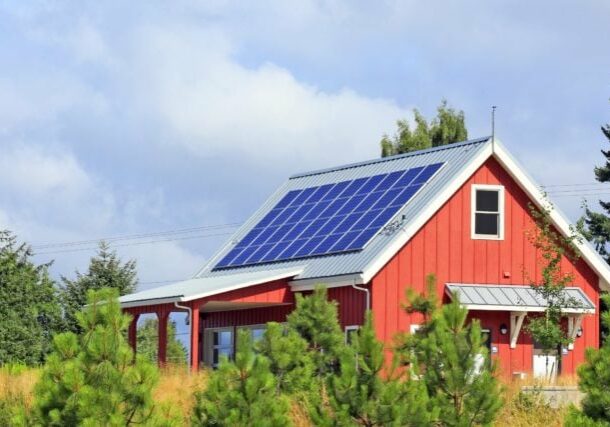September 21, 2016
Massachusetts Goes All-In on Energy Storage
By Todd Olinsky-Paul
The next wave of clean energy policy making will be more focused on energy storage, as evidenced by the release this week of the long-awaited Massachusetts energy storage report, titled “State of Charge.” The study was co-funded by the Massachusetts Department of Energy Resources (DOER) and Massachusetts Clean Energy Center (MassCEC), and it represents a major new policy direction for the state on how to capture the economic and environmental benefits of emerging energy storage technologies.
In impressive fashion, the 200-page report, supported by detailed economic analysis, lays out how Massachusetts can use a smart combination of procurement, financial incentives, market economics, and economic development strategies to expand storage deployment and help grow the storage industry. It is a road map showing how energy storage can save money, increase penetration of renewable power and address climate change in Massachusetts — and, by extension, in other states.
The report proposes that the state invest millions in storage deployment incentives and market development, with the goal of incentivizing 600 MW of new advanced storage capacity by 2025, resulting in an anticipated $800 million in system benefits to ratepayers. These policy actions would be a
big step in moving the state toward the report’s modeled optimal deployment level of 1.766 GW of storage, and may be augmented by the new Massachusetts energy diversity law that empowers DOER to set an energy storage procurement mandate for the state’s utilities.
DOER is supposed to decide by the end of this year whether to establish an energy storage procurement mandate, and if so, for how much additional storage. State utilities would then have until 2020 to meet the mandated procurement target. If established, this would make Massachusetts the third state to create a storage mandate, and the first in the Northeast.
While the study does not recommend an energy storage mandate, it does provide a sophisticated cost/benefit analysis model showing the economic benefits of procuring 1.766 GW of energy storage. According to the study that procurement would cost between $970 million and $1.35 billion, but would yield $2.3 billion in system benefits to ratepayers, plus $1.1 billion in market revenue to the resource owners; and $250 million in regional system benefits to the other New England states due to lower wholesale market prices across ISO New England (ISO-NE). Climate benefits include a carbon emissions reduction of more than 1 million metric tons of carbon dioxide over 10 years — equivalent to taking 223,000 cars off the road.
The study begins by laying out the business case for storage. The state’s electric system is inefficient, it says, with storage capacity accounting for less than 1 percent of the state’s daily electricity consumption. The grid must be balanced by the nearly-instantaneous ramping up and down of fossil fuel generators, requiring the building and maintenance of numerous gas “peaker” plants that only run 2 percent to 7 percent of the time. That means these plants sit idle more than 90 percent of the time.
The report also points to inefficiencies in the grid infrastructure and resulting high costs to ratepayers due to “highly variable” electricity prices. The report claims that from 2013-2015, the top 1 percent most expensive hours for electricity consumption accounted for more than 8 percent ($680 million) of Massachusetts ratepayers’ annual electricity costs, and that the top 10 percent of hours during those years, on average, “accounted for 40 percent of annual electricity spend, over $3 billion.”
The report suggests that energy storage is “the only technology that can use energy generated during low cost off peak periods to serve load during expensive peak periods, thereby improving overall utilization and economics of the electric grid.”
So, if storage is so beneficial, why isn’t there more of it already? The Massachusetts study identifies the single biggest barrier to energy storage deployment:
“While the system benefits alone justify an investment in storage from a ratepayer perspective, the revenue mechanisms that would encourage investment from a private storage developer are insufficient. Without a means to be compensated for the value the storage resource provides to the system, private investors will simply not invest in building storage projects in Massachusetts…. The biggest challenge to achieving more storage deployment in Massachusetts is that there is a lack of clear market mechanisms to transfer some portion of the system benefits… to the storage project developer.”
This is the main problem addressed by the study’s policy and program recommendations, which fall into two broad categories: (1) recommendations to expand deployment of advanced energy storage in the state, and (2) recommendations to grow the energy storage industry.
The deployment-oriented recommendations include grant and rebate programs, such as doubling funding for demonstration projects from the previously-announced $10 million to $20 million; offering $20 million in rebates for customer-sited storage out of state ACP funds; dedicating $150,000 to support commercial/industrial feasibility studies; awarding the remaining $14.2 million in DOER’s Community Clean Energy Resiliency Initiative budget; and allocating $4.5 million in demonstration project grants for utilities and market actors to demonstrate peak demand management.
The study also recommends adding storage as an eligible technology within the existing Green Communities Grant, Alternative Portfolio Standard, and Next Generation Solar Incentive Programs, and allowing storage to be included in all future long-term clean energy procurements.
There are also recommendations that the state clarify the regulatory treatment of utility storage, including the treatment of storage in grid modernization plans; adopt storage safety and performance standards; clarify interconnection requirements; facilitate sharing of electricity customer load data and use cases by facility type; and create an advanced storage working group at ISO-NE to remove regulatory and market barriers that keep storage from participating in regional wholesale energy markets.
Recommendations to grow the energy storage industry in Massachusetts include creating an energy storage cluster and expanding the MassCEC investment programs to support energy storage companies; expanding MassCEC’s workforce training programs; and engaging the state’s universities to support energy storage startups in Massachusetts and invest in research and development and testing facilities to anchor an energy storage cluster.
The bottom line is that Massachusetts — assuming programs and policy making follow this study’s recommendations — is about to throw nearly every tool in its considerable policy toolbox at the problem of how to make energy storage go, and go big, in the Commonwealth.
The study is a landmark product, not just for Massachusetts, but for all states; and it serves as an example of what can and should be done to move our electricity grids out of the 19th century and begin leveraging real and significant support for technologies that will save money, improve reliability and resiliency, reduce greenhouse gas emissions, and support the transition to renewables and distributed generation.
But no report is perfect; so what’s missing from this one? Well, for one thing, there is no mention of how to make the benefits of energy storage accessible to low- and moderate-income communities, which need energy cost savings and resiliency the most; nor is there any discussion of storage in multifamily affordable housing, where it can provide both resilient power and economic benefits.
Given the Baker-Polito Administration’s heralded $15 million Affordable Access to Clean and Efficient Energy Initiative — a cross-cutting initiative designed to focus the state’s multiple energy and housing agencies on expanding clean energy opportunities for low- and moderate-income residents — this omission may be remedied during implementation.
And there is still the open question of whether the state will implement measures to reach the modeled, economically optimal, storage deployment level of 1.766 GW. Between the report’s policy recommendations and new enabling legislation, the state may have the new tools to get there. How far it will actually go, still remains to be seen.
On the whole, though, the report is an impressive piece of work — the kind of thorough analysis other states should look to when teeing up energy storage policy development. And if even half the report’s recommendations are quickly implemented, it will position Massachusetts as a clear leader in the development of meaningful energy storage policy, programs, and deployment. It’s now up to other states to follow Massachusetts’ example.
Clean Energy Group and the Clean Energy States Alliance (CESA) are working to support MA DOER and MassCEC in their energy storage and resilient power initiatives, by providing technical assistance directly to municipal awardees of DOER’s Community Clean Energy Resilience Initiative, and by providing policy and program development support to both agencies, through the Energy Storage Technology Advancement Partnership (ESTAP) and Resilient Power Project. ESTAP is supported by US DOE-OE through a contract with Sandia National Laboratories, while Clean Energy Group’s Resilient Power Project receives funding from the Barr Foundation in support of this work.
This article was also published in Renewable Energy World.














